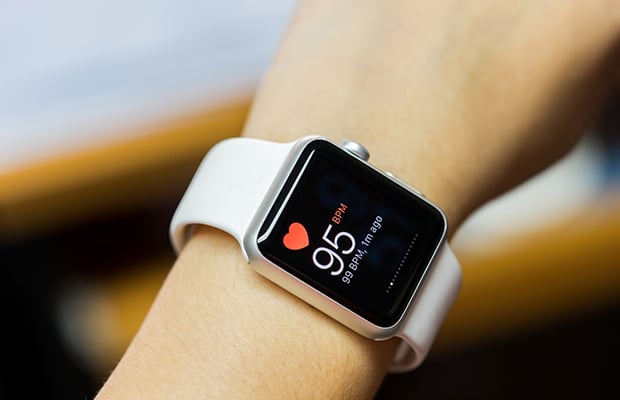Finding a reliable heart rate monitor can be surprisingly tricky. I’ve tried a few wrist-based ones in the past, but they tend to lose accuracy during high-intensity workouts, especially cardio and weight training. After doing some proper digging across forums, blogs, and expert reviews, I realized that chest straps still hold the top spot when it comes to precise tracking.
I spent the last few days scrolling through articles on Wirecutter, Men’s Health, Lifewire, and even the New York Times’ product recommendations. Most fitness enthusiasts still agree: if you want the most accurate readings, chest straps outperform wrist monitors every time.
After reading through multiple reviews, comparing real-user experiences, and checking what people say on fitness forums, two products kept coming up again and again:
- FITCENT Rechargeable Heart Rate Monitor Chest Strap
- FITCENT Heart Rate Monitor Chest Strap with Fitness Tracker
Both are from the same brand — FITCENT — which has built a strong reputation for quality and consistency. But since they look so similar on paper, I decided to dig deeper into both models to see what actually sets them apart.
🔹 FITCENT Rechargeable Heart Rate Monitor Chest Strap
The rechargeable version is the one most people talk about when they’re serious about fitness tracking. It’s designed for those who train multiple times a week and need dependable accuracy.
Setup & Compatibility:
This model pairs quickly with most popular apps like Strava, Peloton, Zwift, Wahoo, and Garmin. It uses Bluetooth and ANT+ connectivity, so it works across multiple platforms — phones, watches, and gym equipment. The pairing process is super simple — no confusing steps or app crashes.
Accuracy & Performance:
Users across different forums mention that this strap gives consistent readings even during HIIT sessions or long-distance runs. The strap sits snugly on the chest, ensuring the sensor stays in contact with your skin — that’s key for accurate tracking. Many wrist devices struggle when you start sweating, but this one doesn’t lose signal.
Battery Life & Charging:
One of its standout features is the rechargeable battery. You can charge it using a standard USB cable, and once full, it lasts for about 60 hours of active use. That means even if you work out daily, you’ll only charge it once every couple of weeks. It’s a small detail, but not having to replace coin batteries all the time makes a huge difference.
Comfort & Design:
The strap material feels soft but firm enough to stay put during movement. You can adjust it to fit your chest size comfortably. Even during long cycling or running sessions, it doesn’t irritate the skin — something many cheaper straps fail to manage.
Pros:
✅ Rechargeable (no batteries to buy)
✅ Strong connection stability
✅ Works with major apps
✅ High accuracy during intense workouts
Cons:
❌ Slightly pricier than standard battery models
❌ Needs charging every few weeks
🔹 FITCENT Heart Rate Monitor Chest Strap with Fitness Tracker
This version focuses more on smart features and long-term tracking. It’s ideal if you’re into data and want to monitor trends, not just your heart rate in the moment.
Performance & Syncing:
It connects just as easily via Bluetooth and ANT+, and it’s compatible with a wide range of apps — Peloton, Strava, Zwift, Polar Beat, and others. The connection remains stable during workouts, even when switching between indoor and outdoor sessions.
Added Fitness Tracking:
This model offers extra tracking features beyond heart rate, like calorie estimates, exercise intensity zones, and recovery insights (depending on the app you sync with). It’s designed to help you understand your performance over time, not just show raw numbers.
Battery & Durability:
Instead of a rechargeable battery, this one uses a CR2032 coin cell, which typically lasts around 12 months with regular use. That’s a big plus for people who don’t want to remember to charge their device. Just replace the battery once a year and you’re good to go.
Comfort & Fit:
Like the rechargeable version, it has a lightweight and breathable strap. It’s sweat-resistant and easy to clean, which is important if you train daily.
Pros:
✅ Long-lasting replaceable battery
✅ Reliable data tracking
✅ Comfortable fit
✅ Affordable price point
Cons:
❌ No built-in recharge option
❌ Slightly fewer customization settings
⚖️ Which One Should You Choose?
Both of these FITCENT chest straps deliver excellent accuracy and are compatible with almost every major fitness platform.
If you’re a tech-savvy user who prefers convenience, hates replacing batteries, and wants a device that syncs fast — the FITCENT Rechargeable Heart Rate Monitor Chest Strap is probably your best pick.
But if you’re more about simplicity and long-term use without worrying about charging, the FITCENT Heart Rate Monitor with Fitness Tracker will serve you perfectly.
Ultimately, both perform impressively in real workouts, and it really depends on your training style and personal preferences.
🏁 Final Thoughts
After reading endless comparisons and user feedback, one thing is clear — FITCENT has nailed it when it comes to balancing accuracy, comfort, and connectivity. Whether you’re cycling, running, or doing interval training, both these models can handle your fitness needs with precision.
If you’ve been frustrated with wrist monitors that jump around mid-workout, switching to a reliable chest strap like one of these is a total game changer.
👉 Check Latest Price: FITCENT Rechargeable Heart Rate Monitor
👉 Check Latest Price: FITCENT Heart Rate Monitor with Fitness Tracker


